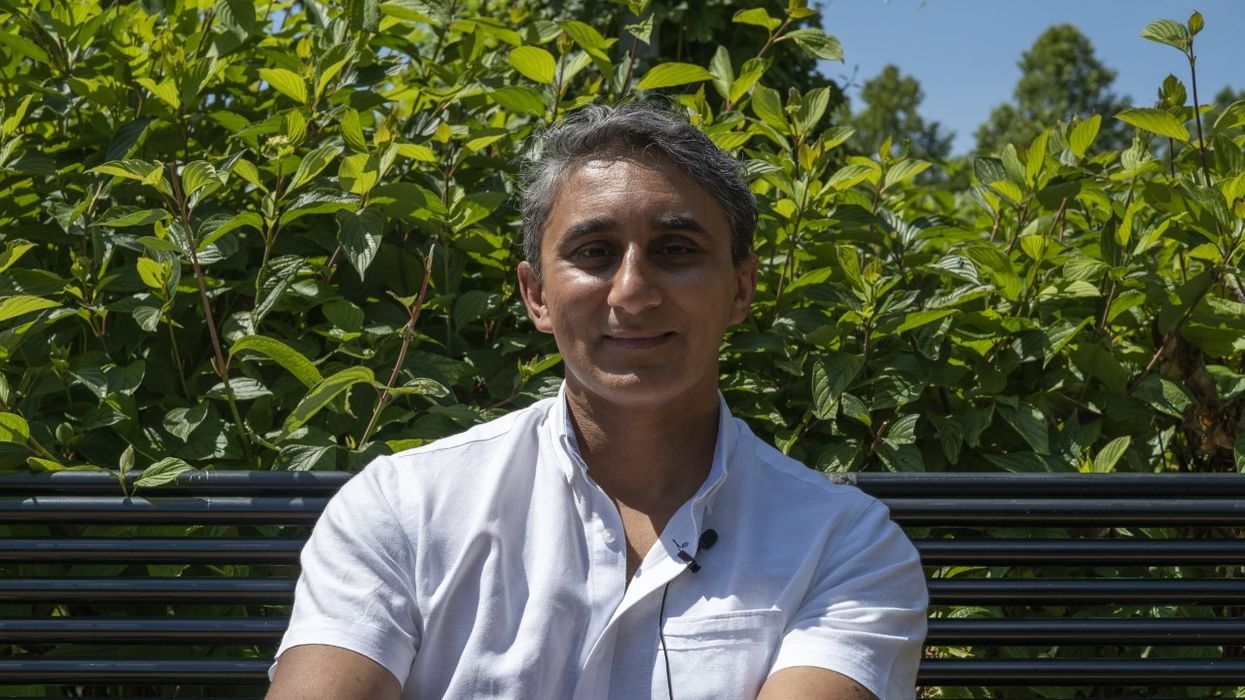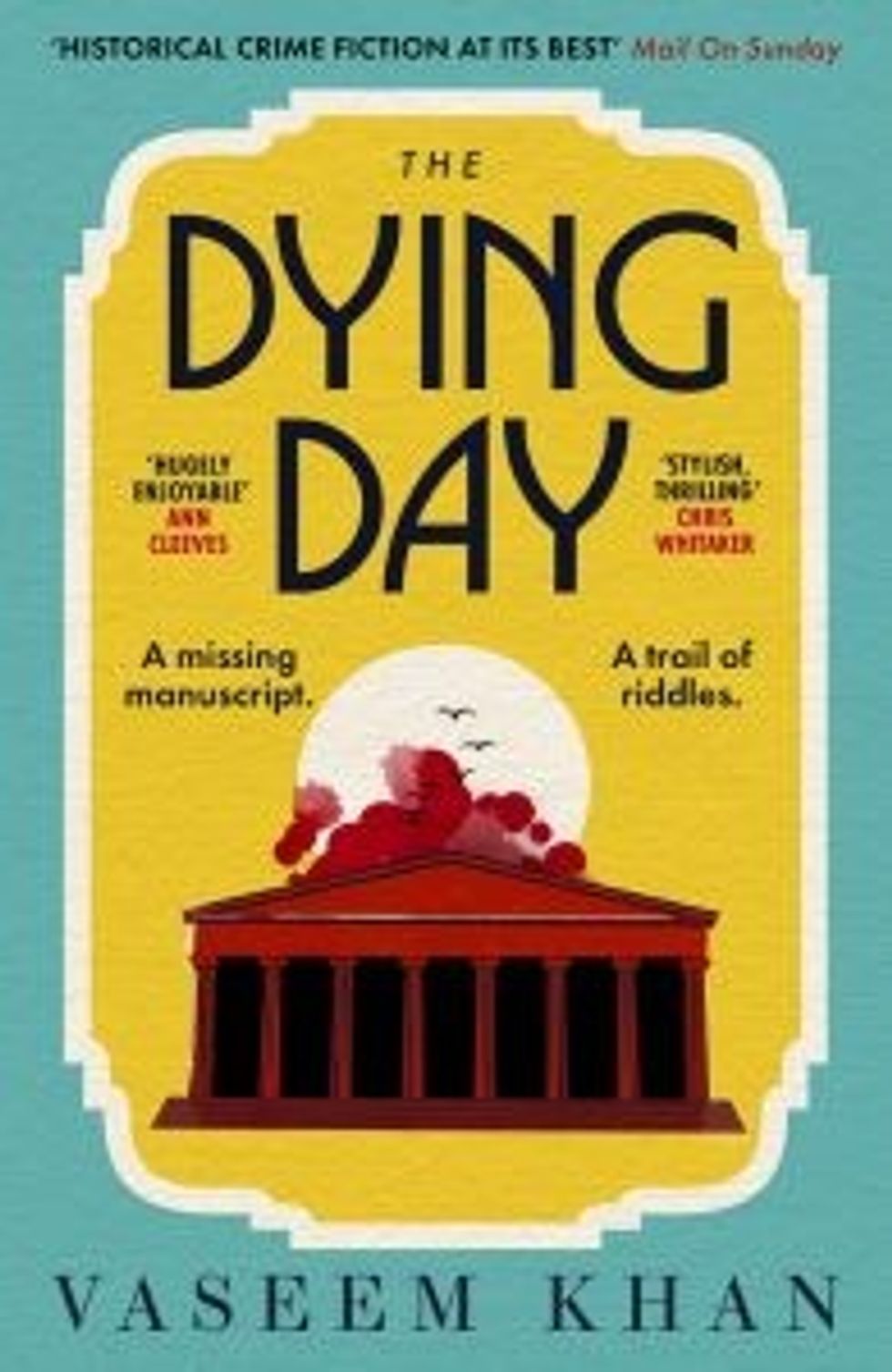VASEEM KHAN RETURNS WITH ANOTHER BOMBAY MYSTERY
ACCLAIMED author Vaseem Khan has shown comprehensively that he knows how to write a great detective novel.
After finding success with five fabulous Baby Ganesh Detective Agency novels set in modern-day Mumbai, he commenced on a new journey with the marvellous Malabar House series, which are rooted in 1950s Bombay and introduce India's first female police detective, Persis Wadia. He has followed up Midnight at Malabar House with new novel The Dying Day, which sees his perfectly written protagonist return to solve another complex mystery, revolving around a priceless treasure and a series of deaths connected to the case. The new novel is the latest chapter of an interesting literary journey for someone who clearly loves creating new worlds through writing.
Eastern Eye caught up with Vaseem Khan to discuss his new novel, the secret to writing a great thriller and his excellent podcast.
What first connected you to writing?
As a teenager I loved Terry Pratchett’s Discworld series, which inspired me to write a comic fantasy novel aged 17. Of course, it was awful! But it convinced me that one day I could be a writer. I didn’t know then that it would take me until the age of 40 to get published.
How did you feel when your first book was published?
After seven unpublished novels submitted over two decades, it was one of the greatest moments of my life to receive a four-book deal for my crime series set in modern Mumbai. The first in that series, The Unexpected Inheritance of Inspector Chopra, was a Times bestseller, now translated around the world. It introduces us to a very rigid and honest detective from the Mumbai police who retires early and sets up his own detective agency. He also inherits a baby elephant, and this allows me to showcase a different side to his character, while he solves murders in the city.
What led you towards writing The Dying Day?
I lived in Mumbai for a decade and still remember my first visit to the Asiatic Society. I was astonished to discover the treasures housed there – a rare copy of Dante’s The Divine Comedy and a Shakespeare First Folio dated 1623. The memory of that visit stayed with me, even when I moved back to the UK, and eventually found its way into the plot.
Tell us about the story?
The Dying Day is the second book in my historical crime series set in 1950s Bombay, following on from the bestselling Midnight at Malabar House. The plot of the novel centres around the theft of the 600-year-old copy of Dante’s The Divine Comedy, which has been stored at the Asiatic Society of Mumbai for almost two hundred years. When the Society’s curator, an Englishman, disappears at the same time, with only coded riddles left in his wake – inspired, I admit, by Dan Brown’s The Da Vinci Code – bodies soon begin to pile up.
How much research did you have to do about that time period?
A lot! 1950s India isn’t well explored in fiction, so I had to rely on old records, newspapers, non-fiction texts, and document archives. It’s an incredibly interesting time in India – just a few years after Independence, Partition, and Gandhi’s assassination.
What was the biggest challenge you faced while writing the story?
Coming up with the various codes, ciphers and clues and then linking them
to Bombay. The book is a blend of action and complex puzzles.
What inspired the female protagonist?
My lead character, Persis, is India’s first female police detective. I chose to write her as a way to give voice to women of that era, who were denied the right to work in professions considered to be male-only domains. As the only woman in the Bombay police, she encounters a lot of opposition. But she’s smart and stubborn and won’t be stopped!
Did you learn anything new while writing the novel?
Every time I research the city of Mumbai/Bombay, I learn something new. For instance, did you know that there is a long tradition of Freemasonry in the city? The Freemasons have been in India since the 1700s, their customs brought over by the British.
What according to you is the secret of writing a great thriller?
The secret is keeping the reader guessing. The best thrillers pose questions and then use clues and red herrings to keep the reader turning the pages. In The Dying Day we have clues, codes, and ciphers, as well as a shadowy opponent in the background.
What do you enjoy reading?
I love literary fiction, especially satire. I also enjoy crime fiction. The Harry Bosch novels by Michael Connelly are brilliant, Angel’s Flight, in particular.
What according to you makes for a good story?
A plot that challenges the reader, an immersive setting, and characters you really want to get to know.
What has the experience of co-hosting your superb podcast been like?
The Red Hot Chilli Writers podcast, which I co-run and host with my great friend and fellow crime writer Abir Mukherjee, was recently selected as a media partner at the British Book Awards, a very proud moment for us. We’re both laidback people and like to have fun with our guests, who are some of the most famous writers around. We recently had Richard Osman, host of TV quiz show Pointless, and now a million-selling author, on. We ran a quiz with him – it was hilarious. Tune in!
What advice would you give to other aspiring writers?
Perseverance is everything. You have to be willing to improve the quality of your writing over time, by finishing and submitting novels.
What inspires you creatively?
Cricket! I play cricket and do a lot of writing while watching cricket.
Why should we pick up your new novel The Dying Day?
My favourite quote for The Dying Day comes from one of the hottest crime writers in the world right now, M.W. Craven, winner of the Crime Writers Association Gold Dagger Award in 2020. He describes the book as ‘The Da Vinci Code meets post-Independence India’. If that intrigues you, then please do buy the book.
The Dying Day is available from July 8. Visit www.vaseemkhan.com, Twitter: @VaseemKhanUK & Facebook: @VaseemKhanOfficial













